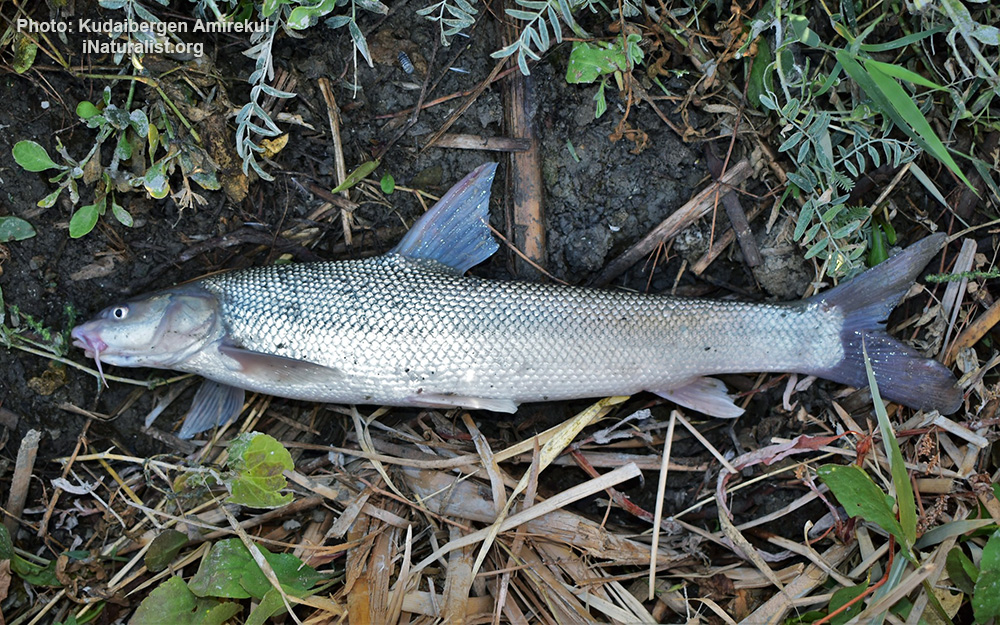Aral barbel
(Luciobarbus brachycephalus)

Classification
General data
Distribution
Europe and Asia: Southern and western Caspian Sea; Aral basin; River Chun (Kasakhstan).
For spawning, migrates up to larger tributaries of western and southern coasts: Terek, Samur, Kura, lower Aras.
Rarely in lower Volga (up to Volgograd) and Ural.
Max length : 105 cm TL max. published weight: 22 kg
Short description
Diagnosed from other species of Barbus and Luciobarbus in Caspian Sea basin by having the following characters: predorsal length shorter than postdorsal length; dorsal fin usually with 7½ branched rays; 16-25 gill rakers; back between head and dorsal origin laterally compressed, forming a keel; lateral line with 62-90 (usually 65-77) scales; and lower lip thin, without median lobe or pad.
Biology
Found in rivers, reservoirs, lakes and canals. Occurs in the sea at depths of up to 25 m and in rivers in deep stretches with gravel or stone bottom. In freshened parts of sea, preys mainly on benthic crustaceans. Does not feed while migrating upstream and starts to feed again at the spawning sites mainly on insects, juveniles of other fishes, rarely on algae, seeds and other plant material. Spawns in fast-flowing water at areas with hard bottom and depths of 1-2 m.
Eggs are semipelagic and hatch while drifting downstream after at least 2 days at 25°C. Larvae settle into places with slow current; after 2-12 months juveniles drift downstream to sea or reservoir if river is dammed.










